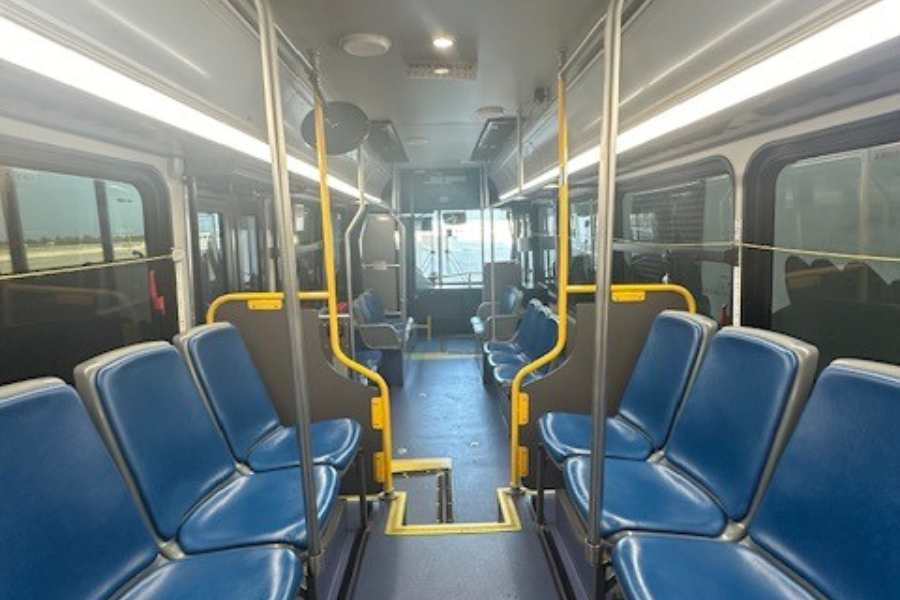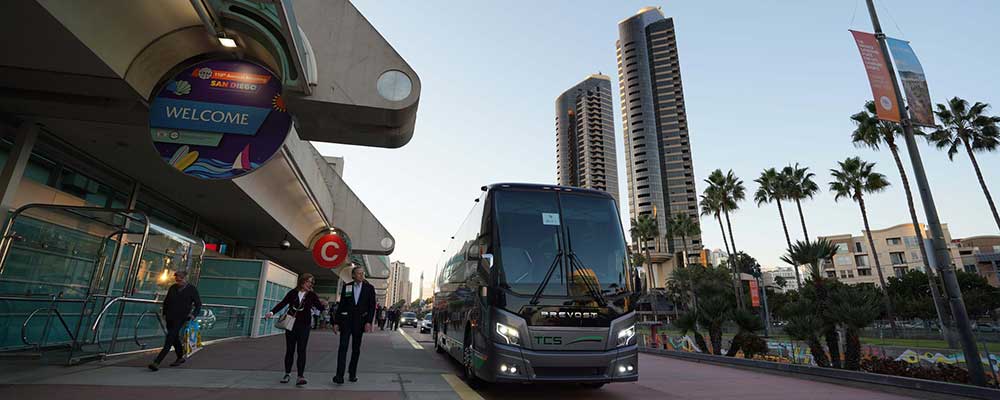Here are 10 great tips to help you choose the right shuttle vehicle for your employees.
1. Examine the needs of employees for transportation
Start by conducting a thorough analysis of your employee base to determine the amount of employees that will use the shuttle service frequently. Take into consideration factors like the size and composition of your staff, the shifts they work, or the times when the most passengers are making use of the shuttle service. This information will help you choose the correct vehicle capacity and ensure that your shuttles are able to accommodate a variety of passengers.
2. Select the right type of vehicle
You can pick the vehicle most suitable for shuttle service based on your employees' requirements as well as the number of them. Minibuses are and vans available, as well as vans or larger buses. Minibuses are ideal for smaller groups as they are able to fit into smaller places, while large buses are ideal for large groups. If employees travel with luggage or bags, consider the layout of the vehicle and whether it is equipped with comfortable seating.
3. Evaluate Fuel Efficiency
Fuel costs can significantly impact the total budget for shuttle services. Make sure to choose fuel-efficient vehicles when choosing vehicles that reduce operating costs. Consider electric or hybrid vehicles, too, as they are more durable and offer savings over the long term. An analysis of fuel efficiency could assist you in making a informed purchase decision by balancing capacity and cost.
4. Consider Accessibility Features
To accommodate employees who require special accommodations, make sure that your vehicles can be adapted to the needs of your employees. This includes features like wheelchair lifts and low floors, which allow for easy entry in, or specifically seating for people who have mobility challenges. It not only meets legal requirements, it also creates a welcoming working environment.
5. Plan for Growth & Flexibility
As companies grow, size of the workforce may alter. When choosing a vehicle, think about the possibility of growth in the future. Investing into vehicles with adjustable seating arrangements and the ability to expand capacity will let you change the number of employees you employ without having to replace your vehicle regularly.
6. Find safety ratings, reviews, and features
Safety is the most important factor in the transportation of employees. If you are choosing a vehicle, make sure to investigate its safety features and rating. Look for vehicles with advanced safety features like anti-lock brake systems, stability control systems and collision-prevention systems. Also, ensure that all safety standards are met by the vehicle to ensure the safety of employees while traveling.
7. Examine reliability and maintenance
Choose vehicles that are renowned for their low maintenance cost and dependability. If your vehicle requires frequent repairs could disrupt shuttle operations or lead to employee frustration. To extend the lifespan of your car, look into reliability ratings and maintenance schedules for each make and model.
8. GPS and Fleet Management Software
Implementing GPS trackers and fleet management software can boost the efficiency of shuttle services. These programs allow for real-time tracking of vehicle locations and can improve routes based on traffic conditions, employee schedules and other schedules. Additionally, using fleet management software can help track vehicle performance as well as fuel consumption and maintenance requirements, making sure that vehicles are utilized efficiently.
9. Employee Feedback Mechanisms
Surveys or suggestion boxes could be used to motivate employees to give feedback on vehicle comfort. Understanding the employees' experiences can help you pinpoint any issues related to seating or accessibility. Reviewing this feedback regularly will help you make the needed adjustments to vehicle selection or service adjustments to ensure a positive transportation experience.
10. Total Cost of Ownership: How do you budget?
The total cost of ownership also known as TCO, includes the cost of purchase as well as maintenance and insurance costs, and depreciation. TCO assists in making informed choices that balance long-term costs and initial investments. The company can select an option that meets the budgetary requirements while also providing the capacity and reliability by evaluating all costs.
The following tips can assist organizations in choosing the appropriate vehicles and control their ability to provide employees with shuttle service. This will provide the safety of employees and comfortable. It will also meet the requirements and needs of employees. Follow the most popular consultant for blog info including airport service near me, car service at airport, airport rides, dallas airport shuttle to hotels, shuttle bus service, airport transportation services, airport shuttle pickup at home, airport transportation, car services lax airport, sfo airport transportation and more.

10 Tips To Save Money And Cost Considerations For Corporate Event Transportation Services
Here are 10 suggestions for budget and cost considerations for a corporate event transportation:
1. Perform a comprehensive Analysis of Costs
Do a comprehensive cost-analysis of all aspects of the services. This includes costs for vehicle leasing or rental and driver wages, fuel and costs, insurance, maintenance as well as additional costs such as parking or permits. Knowing the total cost can help to create a realistic budget.
2. Budget Framework
Set up an organization's budget to show how much it is willing to invest in transportation. The framework should be able to account for all foreseeable expenses, and also allow for flexibility to account for any unexpected expenses. Budgeting aids in making choices and keep transportation costs in check.
3. Discover Different Transportation Alternatives
Think about the various transportation alternatives for your event. They could include vans, shuttles or ride-sharing service. Examine the cost of each option while weighing aspects like convenience and comfort. The transportation budget can be optimized by selecting the option that's most economical and is able to meet the participants' requirements.
4. Negotiate contracts with transportation providers
Negotiate contracts with transportation companies to get the best rate. Numerous transportation companies offer discounts to big events or bulk bookings. A good relationship can result in lower rates, better service and ultimately a budget-friendly experience.
5. Plan for Fuel Costs
The cost of fuel is a significant aspect of the transportation costs. Estimate the number of trips and the distance needed to reach the event. Make sure you negotiate fuel-efficient car options with the transportation provider to reduce costs.
6. Include Contingency Funds
Set aside a portion of contingency funds for unexpected expenses. Transportation is not always predictable. There are many factors that could go wrong, such as vehicle breakdowns or the need for additional transportation. With contingency funds, you can address these situations without overspending or compromising the quality of service.
7. Take into consideration Group Discounts and Packages
Transport providers may offer discounts for groups or package deals. Many companies offer discounts to large groups or corporate events as well as other special occasions. This can save you lots of money. Inquire about any available packages that offer extra services, such as on-site coordination or extra vehicles, for a reduced rate.
8. Monitor and track Expenses
Maintain a close watch on all transportation-related expenses throughout the planning and execution phases. Tracking costs in real time is possible using budgeting tools, spreadsheets or any other software. Examine expenses to discover areas where you can save.
9. Get feedback for future Budgeting
Following the meeting, gather feedback from attendees on their experiences with transportation. Also ask about any expenses that might be paid for. The analysis of feedback will give you insight into the performance of the transportation company, as well as guiding future budgeting. Knowing what was successful and what wasn't helps refine the budgets for the future.
10. Determine the cost total of ownership
If you are considering options for transportation, evaluate the total cost of ownership (TCO) for the vehicle. This includes the cost of renting or purchasing the vehicle and regular expenses such as maintenance, insurance, depreciation and insurance. Knowing the TCO aids in making informed decisions that are able to balance the initial cost with long-term financial implications.
These tips will help you control your expenses and make budgetary decisions that are informed for the transportation services for corporate events. A well-planned budget will ensure that the transportation needs are met and contributes to overall event achievement. Participants can concentrate on their experience rather than worrying about the logistics. A well-planned budget and effective cost management improve the reputation of the company and demonstrate a commitment to efficiency and responsibility. View the most popular her explanation on corporate event transportation for more examples including transporting buses, mgt logistics, companies that transport, luxus transportation, transport systems, transportation and logistics services, transport job, logistics web, logistics company near me, global logistics co and more.
